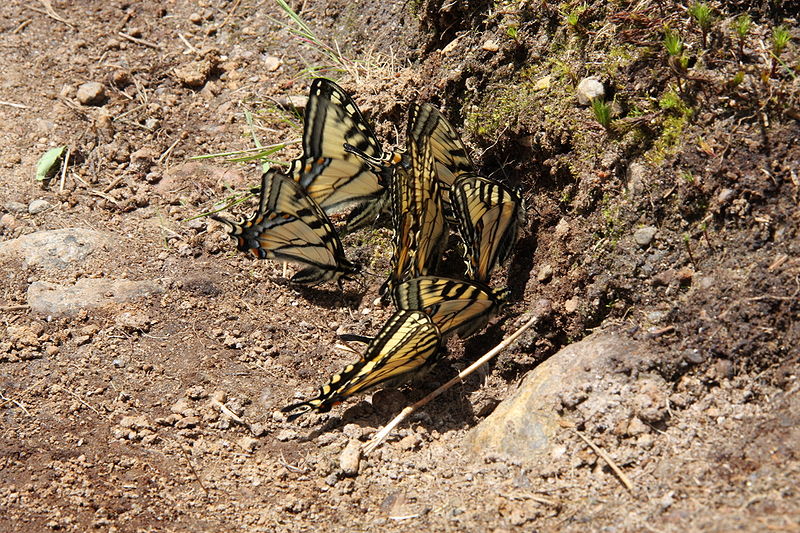
Adaptation
The Canadian Tiger Swallowtail has a lot of unique features that they have adapted over time to better survive, and to make life easier.
After the female Canadian Tiger Swallowtail
lays the eggs in a safe location,
the eggs first hatch begins in spring. During this time leaves
have not grown on plants yet, so in order to camouflage
themselves the larvae has a vulnerable stage where they have
soft molts. When the larvae has a soft molt they tend to look
like bird droppings. Of course their predator, the bird, is not
interested in eating them when they are camouflaged to look like
droppings.
The later hatching period is when there are leaves on the host
plants. In order to blend in with the host plant the larvae is
green to blend in with the green leaves on their
host plant. The larvae of the Canadian
Tiger Swallowtail is thus less likely to be found by predators.
Along with the Canadian Tiger Swallowtail's ability to camouflage themselves in the larval stage, the larva also have another defense against any sort of predator. This defense system is called an osmeteria. The larva uses this defense system by putting the forked organ on the back of their head to action. This forked organ is called an ostromerium. The ostromerium releases a very foul odor whenever the caterpillar is threatened. This is an adaptation that is only present among swallowtails, and no other butterfly.
 There also is another interesting adaptation to the Canadian
Tiger Swallowtail. The male Canadian Tiger Swallowtail is low on
salt intake, due to the fact that the
plants that they feed on have little to no salt in them.
Since the Canadian Tiger Swallowtail needs salt to survived they
found a new source for salt intake. In order for the males to
get the proper amount of salt intake, they go puddling. Puddling
is when the butterfly goes to a puddle of water on the ground
and drinks the water. By puddling the male Canadian Tiger
Swallowtail is intaking salt from the road which has been
dissolved in rain water. The reason only males really partake in
puddling is because the females get enough salt intake from the
male when he fertilizes her eggs.
There also is another interesting adaptation to the Canadian
Tiger Swallowtail. The male Canadian Tiger Swallowtail is low on
salt intake, due to the fact that the
plants that they feed on have little to no salt in them.
Since the Canadian Tiger Swallowtail needs salt to survived they
found a new source for salt intake. In order for the males to
get the proper amount of salt intake, they go puddling. Puddling
is when the butterfly goes to a puddle of water on the ground
and drinks the water. By puddling the male Canadian Tiger
Swallowtail is intaking salt from the road which has been
dissolved in rain water. The reason only males really partake in
puddling is because the females get enough salt intake from the
male when he fertilizes her eggs.